Inspiring Artist Studio Solutions
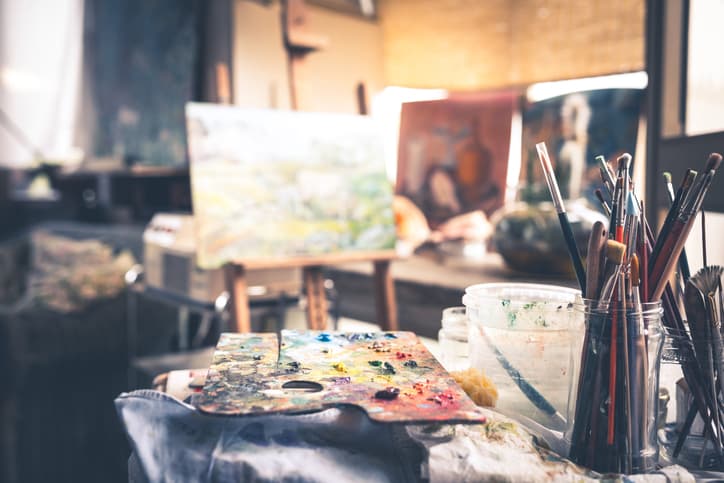
Get creative in the quest for studio space
This month the Artists Network team is focusing on ways to organize your art life from creating the ideal artist studio setup, and streamlining your art-making processes, to getting the business side of your art in order.
We all know finding the perfect artist studio is the holy grail and its something many artists struggle to achieve. This great Artists Magazine excerpt by Samantha Sanders is a wonderful reminder that as artists we can apply our creative problem-solving skills to everything we do, including finding unique places to make art.

A Space to Call One’s Own
For many artists, dedicated studio space is a luxury. Making the best of things, they eke out space in a spare bedroom or a corner of the garage. However, there are also artists for whom necessity has proved mother to some pretty extraordinary inventions. Overcoming restrictions of time, resources and budget, meet three artists that have found unique ways to radically reimagine the space they use to create.
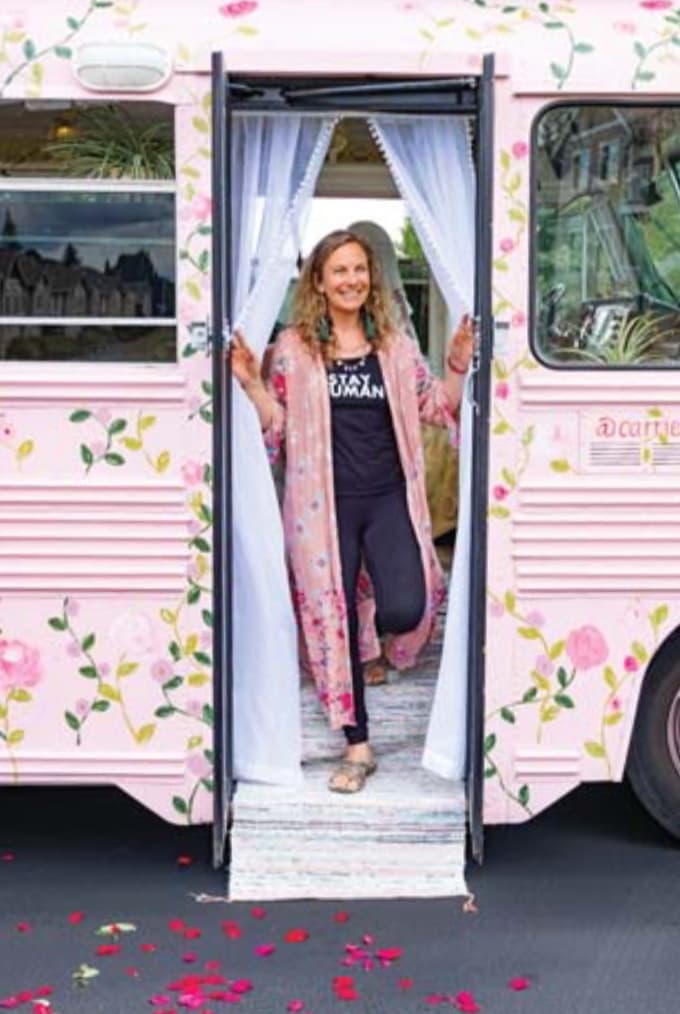
Carrie Schmitt’s Studio on Wheels
“My process is that I paint from the heart, which means I do whatever feels good,” says Carrie Schmitt. It comes as little surprise, then, to learn that a traditional artist studio space is unappealing to Schmitt—not to mention outside of her budget.
“I live in an expensive part of the world, and I couldn’t find affordable studio space,” says Schmitt, referring to her Seattle home. But when she gets desperate, she gets most creative, she claims. Inspiration entered in the form of a Craigslist ad selling a small school bus that an antiques dealer was unloading. Carrie immediately saw the possibilities.
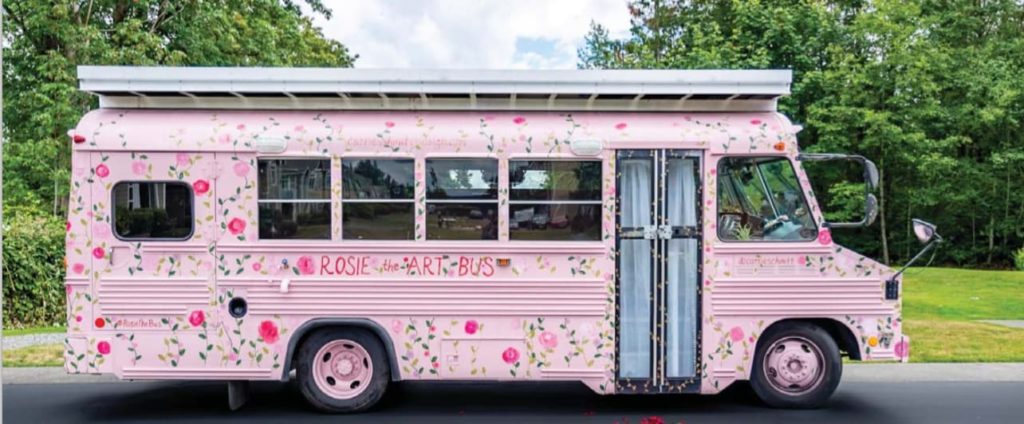
Art On the Go
A mobile artist studio space meant she could not only create her art anywhere but would also have a chance to connect with a wider community—particularly with young, would-be artists who might not otherwise meet a working artist. She knew the challenges. As a single mother, her budget was limited, and she didn’t know how to do the repairs the bus needed. Thanks to some strategic budget-crunching, she was eventually able to hire a builder to complete the work.
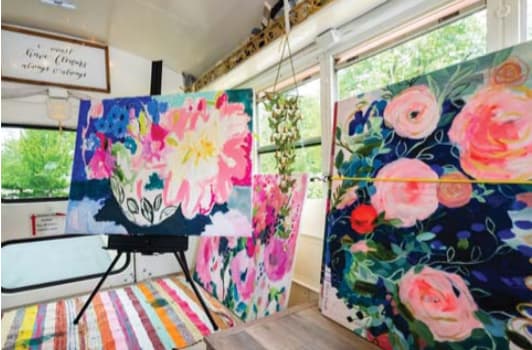
“We tore everything out,” she says. “We put in new floors, cabinetry and a sink. There’s a couch that converts to a table with space to paint and even air conditioning.” There were also plans to build a roof deck where Schmitt could paint outside so that people can watch. “I want kids to see me and know that artists are real. We exist!” she says.
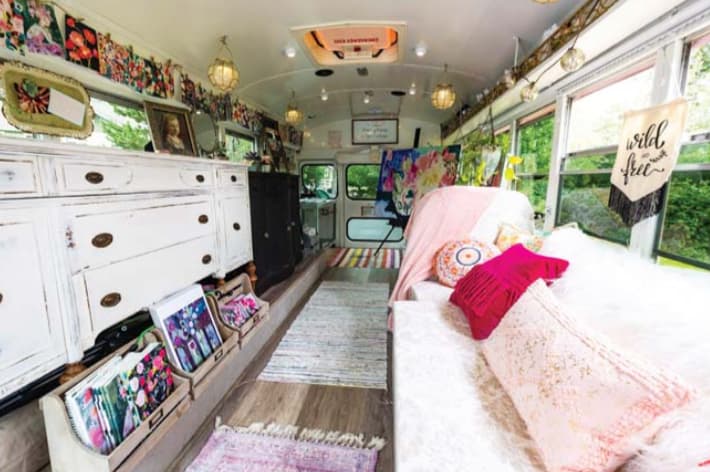
But there’s a practical streak that runs through this artist, too. “I told my dad I could always live in the bus if I had to,” she says, “but he told me, ‘Aim higher, Carrie.’ Someday, though, when my kids are grown up, I might! To me, it’s a great symbol of my freedom.”
Learn more about Schmitt and her work in this video interview and article.
Emilie Lee’s Plein Air Artist Studio
A few years ago Emilie Lee was teaching at a Vermont college and feeling frustrated by a demanding schedule that left little time for art. A pricey apartment lease didn’t ease her mind, and besides, this figure-and-landscape artist’s true home is on the road. “I couldn’t afford my rent, and I was Airbnb-ing my apartment and sleeping in my car a lot. I figured I might as well live in my car and just not pay rent and see if I could paint more.”
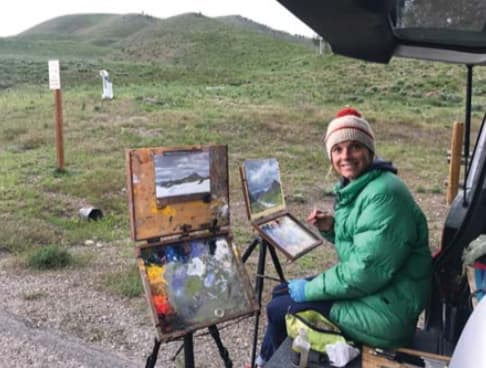
Painting and Road-Tripping
That fleeting thought manifested into a cross-country journey that lasted two months as Lee made her way west. She alternated staying at friends’ homes with camping out and, along the way, painted some of her most beloved landscapes.
“I just kicked into my momentum,” she says. “I made more than 50 paint- ings!” Where did she stash them while she and her dog, Honey, were on the road? “I sold them on Instagram along the way,” she says. “I made about $6,000 and had almost no expenses aside from gas and groceries.”
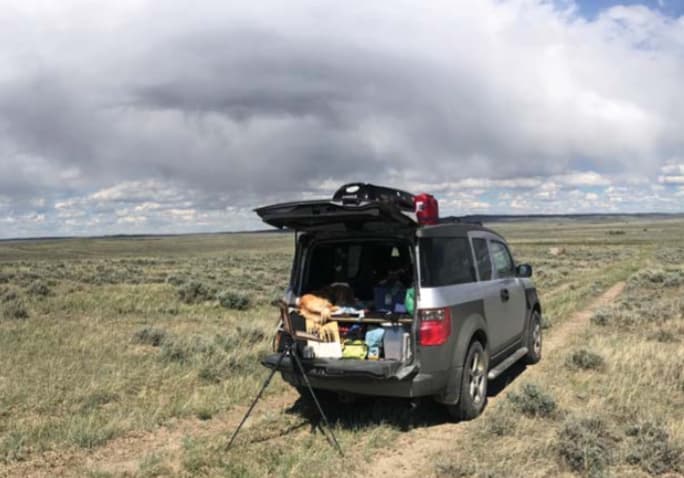
Although Lee has since settled in California, don’t think she’s left the influence of her life-changing road trip behind her. “I arrived in California feeling really empowered,” she says. “My strategy has been to keep overhead low, so I can really focus on painting and be productive.”
Inspiration Off the Grid
Lee now plans regular trips, sometimes traveling to a specific location to paint a commission and other times simply setting out to satisfy her creative urge. “Last week I went to Northern California and didn’t even answer my phone,” she says. “I hiked about 45 minutes into this ravine with a hot thermos of tea and a dog bed for Honey, and I got to spend six hours down there working on two paintings. I came back super inspired to get back in the studio and even got some commissions from it.”
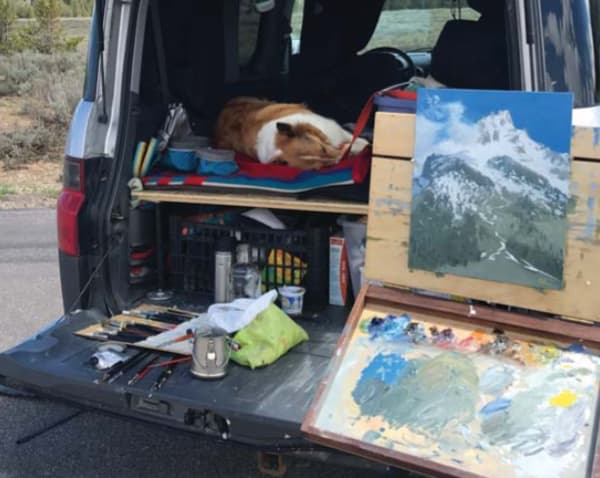
While painting on the road might sound romantic, Lee offers a few practical tips for when reality interrupts the daydream. “Invest in a high-quality tripod. It’s worth it; I’ve broken a lot of them. And I like to bring my creature comforts with me—my cooler of food, coffee.” Lee suggests a few additional essentials: a good backpack with a hip belt to get weight off your shoulders, bug spray, sunscreen, a hat and clothing you can wear in layers. “I always emphasize when I’m teaching that if you’re not comfortable, you’re not going to be able to focus,” she says. “A lot of times I end up picking the spot to paint because it looks most comfortable, like it has shade or a place to sit or even just level ground so I’m not standing in an awkward position for five hours.”
Learn more about Lee, van life, and her work in these video interviews and article.
Miranda Aisling Gets Small to Be Creative
For abstract oil painter Miranda Aisling, the dream of a dedicated artist studio space began “unromantically,” as she describes it. “It was an economic decision,” she says. “I was working at a nonprofit arts center. I’d just finished my master’s degree and was looking at my debt, my savings and the amount I was spending on rent, and I realized that in the tiny-house world, you could spend about $30,000 and have a place to live full-time. I’d spent nearly $16,000 on housing in just two years of grad school, so initially I was just trying to find a find a financially responsible way to live that would also enable me to pursue art in the way I wanted.”
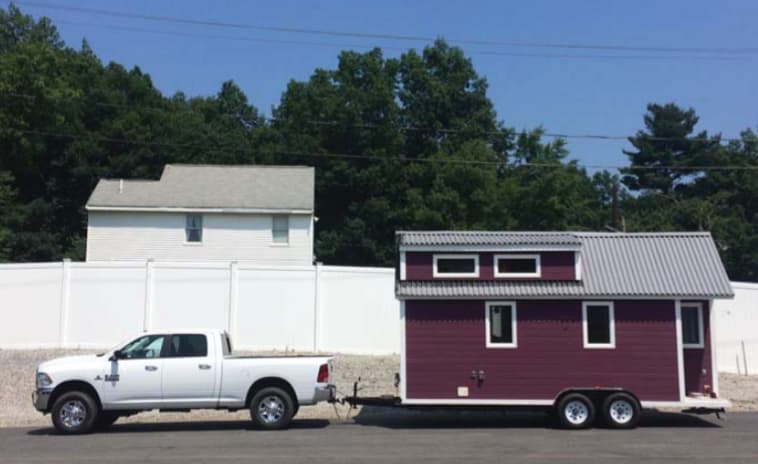
Tiny houses are having a cultural moment, but Aisling emphasizes that dealing with one isn’t always as easy as it might look on home- improvement shows. The first hurdle is finding a place to put it. “My tiny house is in a friend’s backyard, about 45 minutes outside of the city, so one of the choices I had to make was to become a commuter.” Zoning laws can be a problem. “Tiny houses do best in places where they don’t draw a lot of attention,” Aisling says.
A Collaborative Effort
Although her house, which she dubbed “Aubergine” for its striking purple paint job, is in a secluded location now, it had a much showier beginning. “It was built on the front yard of an arts center in Concord, Massachusetts, so it was very public,” says Aisling. “It was there for an entire year for its construction.” Aisling, the project manager, received help from more than 50 people who ranged from professional carpenters to individuals with no building experience.
Sitting in her home brings reminders of those helpers and other contributors. “I can look around me and see the stories of 100 people within 160 square feet,” she says. “My mother’s hands are all over this house. I had friends who donated the artwork. It engenders a level of respect for my home and respect for myself within that home—and creates a sense of responsibility.”
Uninterrupted Creativity
When asked about the philosophy behind her decision, Aisling instead emphasizes the practical. “People write all the time about creativity coming out of a sense of boredom. Living in a small space where I don’t have inter- net, I don’t have TV, and when I first moved in, I didn’t even have electricity, forced me to slow down. I think slowing down is one of the best things you can do to be creative.”
Samantha Sanders is a former staffer with Artists Network and writer whose work has appeared in Artists Magazine, Catapult and The Awl. Photos of Schmitt and studio/bus by Michael Sladek Photography.
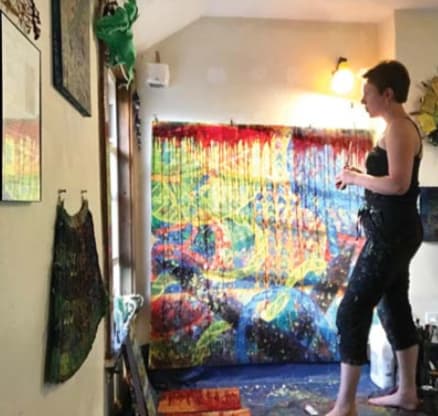
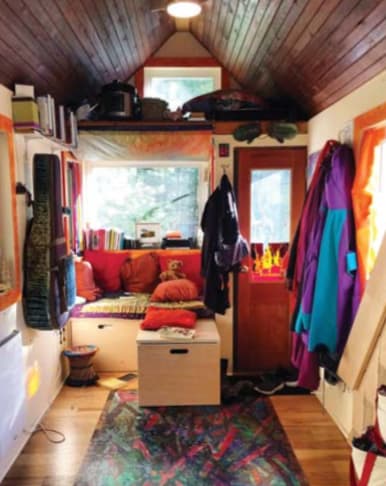
I do struggle with space for my art work….i spend time at the stair case and when i have little chance i will use my dine table which always occupied with my wife stuffs. living in small house where everything is squeezed in. this story real inspired and motivate me for some day i might have my working space right on top of the roof!! thank you for sharing this story